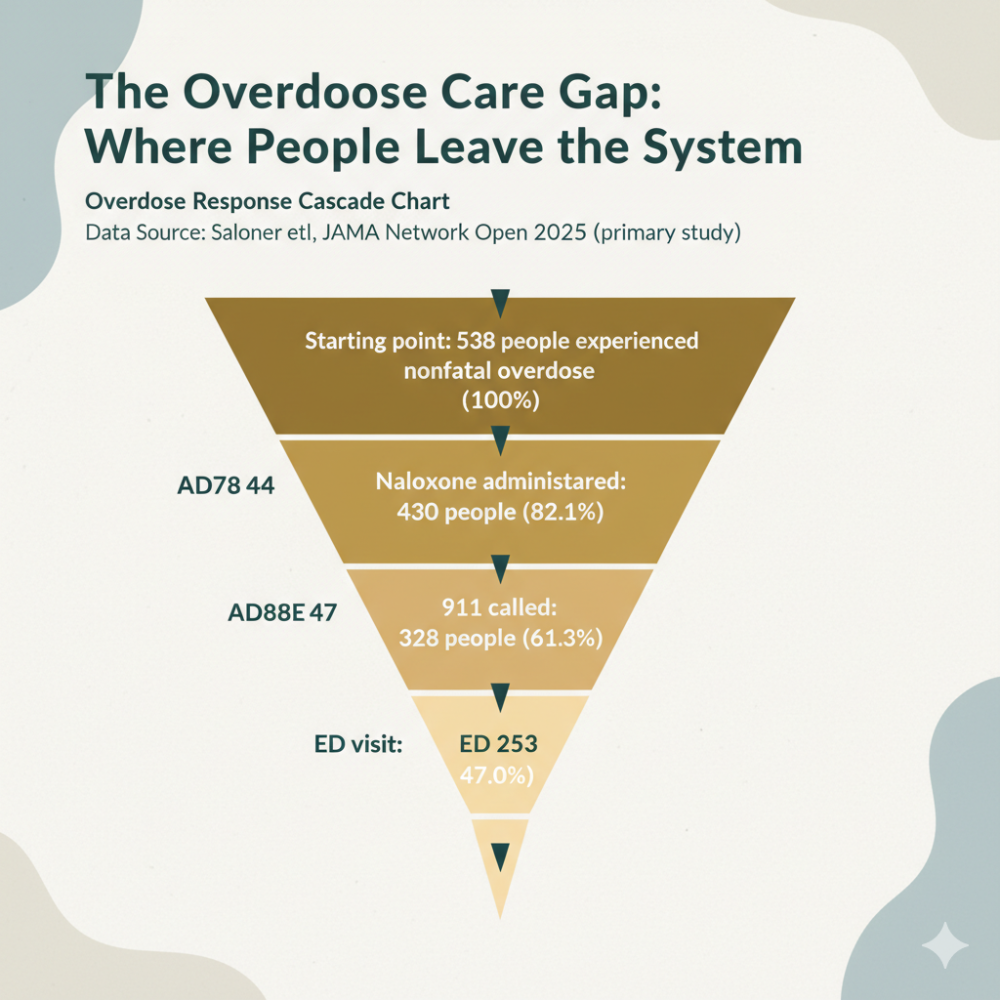Dangers of Combining Valium & Opioids
Risks of Mixing Valium and Hydrocodone (Vicodin®), Oxycodone (OxyContin®, Percocet®), Oxymorphone (Opana®), Morphine (Kadian®, Avinza®), Codeine, Fentanyl, Hydromorphone, Tapentadol, Methadone, and Heroin
In today’s rapidly evolving medical landscape, understanding the potential interactions between prescribed medications is crucial. Two commonly prescribed and, in some cases, misused substances are Valium, a benzodiazepine, and opioids, a class of powerful pain relievers. While each has therapeutic uses individually, their combined consumption can lead to dangerous, even life-threatening, outcomes. This article delves deep into the perils of mixing Valium with opioids, aiming to shed light on the physiological effects, potential risks, and measures to ensure safety.
What is Valium?
Valium, scientifically known as diazepam, belongs to the benzodiazepine class of drugs. Renowned for its anti-anxiety and sedative properties, it plays a pivotal role in contemporary therapeutic practices.
The mechanism of action of Valium centers on its modulation of the brain’s neurotransmitters. Specifically, it enhances the effects of gamma-aminobutyric acid (GABA), a neurotransmitter responsible for inhibiting neuronal activity. By boosting the action of GABA, Valium effectively diminishes neuronal excitability throughout the nervous system.
Since its introduction in the early 1960s, Valium has been recognized for its diverse medical applications. Beyond its primary use in managing anxiety disorders, it is also prescribed as a muscle relaxant, anticonvulsant, and occasionally as a sedative for specific medical procedures. Furthermore, its role in assisting patients undergoing alcohol withdrawal is well-documented, offering symptomatic relief during detoxification processes.
However, the therapeutic benefits of Valium are counterbalanced by potential risks associated with its misuse. Prolonged usage can lead to dependency, with increasing dosages required to achieve the same therapeutic effect due to tolerance development. Moreover, abrupt discontinuation after extended use can precipitate a range of withdrawal symptoms, from heightened anxiety to, in severe cases, convulsive seizures.
While Valium stands as a significant advancement in the field of pharmacology, it demands cautious and informed administration. Proper usage ensures its benefits are harnessed while minimizing associated risks.
Understanding Opioids
Opioids are a class of powerful drugs primarily known for their efficacy in pain management. They derive their name from opium, a substance extracted from the poppy plant, which has been used for millennia for its analgesic properties.
Origins and Types
Historically, opium and its derivatives, like morphine, have played significant roles in medicine. With the advent of modern pharmacology, scientists have developed both natural and synthetic opioids. Natural opioids include morphine and codeine, while semi-synthetic include drugs like hydrocodone and oxycodone. Fully synthetic opioids, such as fentanyl and methadone, are manufactured in labs but mimic the pain-relieving properties of their natural counterparts.
Mechanism of Action
At the molecular level, opioids work by binding to specific proteins in the brain, spinal cord, and gastrointestinal tract called opioid receptors. Once these drugs attach to the receptors, they reduce the perception of pain. They can also affect the brain’s reward system, inducing a sense of euphoria, which can contribute to their potential for misuse and addiction.
Therapeutic Uses
Clinically, opioids are indispensable. They’re utilized for acute pain management, such as post-operative pain, as well as for chronic conditions like cancer-related pain. Some opioids also have cough-suppressing properties and can be found in certain prescription cough medications.
Potential for Dependency
Despite their medical utility, opioids come with a significant caveat: regular and prolonged consumption can lead to physical dependency. Regular and prolonged consumption can lead to physical dependency, wherein the body becomes accustomed to its presence and requires increasing doses to achieve the same effect. This can be a precursor to opioid addiction, a chronic disease characterized by drug-seeking behavior and misuse despite harmful consequences.
Risks and Overdose
Overconsumption of opioids can depress the central nervous system, leading to slowed or arrested breathing, which is often the cause of death in opioid overdoses. The rise of potent synthetic opioids, such as fentanyl, has exacerbated the risk, as even minute amounts can be lethal.
While opioids are a cornerstone in pain management, they require careful administration and monitoring due to their potential for dependency and the associated risks. Their dual nature as both a blessing and a potential curse in medicine underscores the importance of patient education and judicious prescribing practices.
Risks of Mixing Valium and Benzodiazepines
The concurrent use of Valium and opioids can intensify the individual effects of both drugs, resulting in a myriad of health risks. These concerns are not merely additive; they often synergistically interact, creating heightened dangers.
Potentiated Central Nervous System Depression
Both Valium and opioids have depressive effects on the central nervous system (CNS). When consumed together, this CNS depression is amplified. This can result in a cascade of symptoms, including profound sedation, reduced cognitive function, and impaired motor skills. In essence, the body’s primary control system can undergo a significant slow-down, affecting everything from thought processes to reflex actions.
Increased Risk of Respiratory Depression
One of the most alarming risks of combining Valium and opioids is respiratory depression. Both drugs can independently suppress breathing, but when taken together, this effect can become dangerously pronounced. The person may experience shallow breathing, difficulty catching their breath, or, in severe cases, may stop breathing altogether. Respiratory depression is the leading cause of death in cases of overdose from this drug combination.
Potential for Enhanced Dependency and Withdrawal
The co-consumption of Valium and opioids can accelerate the onset of physical dependency. Withdrawal symptoms can also be more pronounced and challenging to manage, encompassing both opioid and benzodiazepine withdrawal symptoms. This can include heightened anxiety, increased pain sensitivity, tremors, and, in severe cases, seizures.
Given the considerable risks associated with the combined use of Valium and opioids, it is imperative for both healthcare professionals and patients to be well-informed. Proper medical oversight, patient education, and regular monitoring can mitigate these risks, ensuring that medications achieve their therapeutic intent without compromising safety.
Valium’s Interactions with Specific Opioids
While the general risks of combining Valium with opioids are well-documented, individual opioids can present unique interaction profiles when combined with Valium.
Dangers of Mixing Valium and Hydrocodone (Vicodin®)
When combined with Valium, hydrocodone’s respiratory depression effects can be dangerously amplified. The drowsiness associated with Vicodin® also becomes more pronounced, increasing the risk of accidents and impaired cognitive function.
Dangers of Mixing Valium and Oxycodone (OxyContin®, Percocet®)
Oxycodone and Valium both have sedative properties. Co-administration can result in intense sedation, slowing the heart rate and dangerously depressing respiratory functions. This combination also amplifies the risk of overdose.
Dangers of Mixing Valium and Oxymorphone (Opana®)
Oxymorphone, already known for its potent pain-relieving properties, can induce deep sedation when combined with Valium. This can lead to extended periods of unconsciousness and risks of respiratory failure.
Dangers of Mixing Valium and Morphine (Kadian®, Avinza®)
As one of the principal opioids, morphine’s effects are substantially intensified with Valium. Respiratory depression, a primary concern with morphine, can become life-threatening when both drugs are consumed concurrently.
Dangers of Mixing Valium and Codeine
Though codeine is less potent than other opioids, its combination with Valium still poses significant risks. The duo can lead to amplified drowsiness, dizziness, and respiratory depression, especially in those not regularly consuming opioids.
Dangers of Mixing Valium and Fentanyl
Fentanyl stands out for its potency, even in minute amounts. Combining it with Valium can be extremely hazardous, heightening the risk of fatal overdose due to exacerbated respiratory depression.
Dangers of Mixing Valium and Hydromorphone
A potent analgesic, hydromorphone’s central nervous system and respiratory depressive effects can be dangerously enhanced when combined with Valium. This elevates the risk of both overdose and profound sedation.
Dangers of Mixing Valium and Tapentadol
Tapentadol, when taken with Valium, can augment CNS depression. This results in severe drowsiness, potential respiratory distress, and an increased likelihood of overdose.
Dangers of Mixing Valium and Methadone
Methadone’s long half-life, combined with Valium, can lead to prolonged respiratory depression and sedation. This is of particular concern for individuals undergoing methadone maintenance therapy for opioid addiction.
Dangers of Mixing Valium and Heroin
Although an illicit substance, it’s essential to understand the interactions between heroin and Valium due to their frequent co-abuse. This combination is particularly perilous, leading to profound respiratory depression, hypoxia, and a dramatically increased risk of fatal overdose.
The combination of Valium with any opioid is a concern, but understanding the specific interactions with individual opioids is vital for medical practitioners and patients. It emphasizes the importance of detailed patient history and vigilant medication management to ensure safe therapeutic outcomes.
Treatment Options for Opioid and Benzodiazepine Addiction
Combating addiction to opioids and benzodiazepines is an intricate process, necessitating a blend of medical, psychological, and behavioral treatments. While the concurrent abuse of these drugs can make the recovery journey more challenging, comprehensive rehabilitation is achievable with appropriate resources and support.
Medical Detoxification
The initial phase in the treatment process often involves medical detoxification, where the goal is to support the person’s body through the process of working these drugs out of their system so that it is a safe and more comfortable experience. During opioid detox, medications such as methadone or buprenorphine are frequently employed to alleviate withdrawal symptoms and diminish opioid cravings. In contrast, the detoxification process for benzodiazepines typically involves a gradual tapering approach. By reducing the benzodiazepine dosage incrementally over a period, severe withdrawal symptoms can be effectively mitigated.
Medication-Assisted Treatment
Medication-assisted treatment (MAT) is another critical strategy, intertwining behavioral therapy with medications to holistically treat substance use disorders. For opioid addiction, FDA-approved drugs like methadone, buprenorphine, and naltrexone play a pivotal role in curbing cravings and restoring neural balance. Although benzodiazepine addiction doesn’t have a specific FDA-endorsed medication, some treatments, like flumazenil, have demonstrated potential in managing withdrawal and cravings.
Psychotherapy Options
Behavioral therapies targeting the root causes and triggers of substance abuse, are instrumental in molding attitudes and behaviors associated with drug abuse. Cognitive-Behavioral Therapy (CBT), for instance, empowers patients to identify and rectify problematic behaviors. It equips individuals with a skill set to abstain from drug use and address other co-existing mental health issues. Contingency Management, another behavioral approach, employs positive reinforcement techniques to incentivize sobriety. On the other hand, Motivational Enhancement Therapy capitalizes on an individual’s intrinsic motivation to change, rapidly engaging them in the treatment process.
12-Step & Support Groups
Support groups also play a vital role in the recovery journey. Peer-led groups like Narcotics Anonymous (NA) or Alcoholics Anonymous (AA) offer a nurturing environment where individuals can candidly share their challenges and recovery techniques. Another notable support system is SMART Recovery, which adopts a scientific approach, leveraging cognitive-behavioral methods to champion sobriety.
Addiction Treatment
The depth of addiction and its effects on an individual’s life often determines the choice between inpatient and outpatient rehabilitation programs. Inpatient programs offer a dedicated treatment environment, making them ideal for individuals grappling with severe addiction or multiple co-occurring disorders. Conversely, outpatient programs, characterized by their flexibility, are tailored for those who have work or family obligations.
Dual Diagnosis Treatment
It’s also worth noting that many individuals addicted to opioids and benzodiazepines may concurrently battle other mental health challenges. Dual diagnosis programs cater to this group, offering treatment for both the substance abuse problem and the accompanying mental health condition. Lastly, considering addiction’s ripple effects on the family, family therapy has emerged as an essential component of the recovery process. This approach involves the family in the rehabilitation journey, fostering understanding and offering additional support to the recovering individual.
While the path to recovery from combined opioid and benzodiazepine addiction can be arduous, a multi-faceted treatment approach can lead to lasting recovery. Early intervention, coupled with a steadfast commitment to treatment, can pave the way for a drug-free life.
Help is Available
Navigating the labyrinth of prescription medication addiction, especially when it involves potent substances like Valium and opioids, can be daunting. The risks of their combined consumption are real and have severe repercussions. Fortunately, there are specialized facilities dedicated to helping those ensnared in the clutches of such dependencies. Gallus Medical Detox Centers stand at the forefront, offering medically supervised detox programs tailored to the unique needs of those battling prescription medication addiction. Their holistic approach not only ensures a safe detox but also sets the foundation for sustained recovery.
If you or a loved one are grappling with addiction and the potentially devastating effects of combining medications, remember: help is just a call away. Don’t hesitate. Reach out to Gallus Medical Detox Centers today and take the first step towards a healthier, drug-free future.
FAQs
Are Valium and opioids both classified as depressants?
Yes, both Valium (a benzodiazepine) and opioids are classified as central nervous system depressants. This means they slow down brain activity. When combined, the depressive effects on the central nervous system can be amplified, leading to severe consequences such as respiratory depression.
Why do some people combine Valium with opioids?
Some individuals combine the two either inadvertently (due to prescriptions from different doctors) or intentionally to achieve a more potent or prolonged euphoric effect. However, the combination also significantly raises the risk of fatal overdose and other adverse events.
Can one safely consume Valium and opioids with time intervals in between?
Even if taken hours apart, the effects of Valium and opioids can still overlap, especially considering the half-lives of these drugs. It’s crucial to always consult a medical professional before taking any combination of medications.
Are there any safe alternatives to Valium for managing anxiety or muscle spasms if one is already on opioids?
There are several alternative medications and therapeutic approaches to manage anxiety and muscle spasms that may be deemed safer, especially for patients on opioids. It’s essential to have a comprehensive discussion with a healthcare provider to find the best-individualized approach.
What should one do if they suspect someone has overdosed on a combination of Valium and opioids?
Call emergency services immediately. Overdosing on this combination can be life-threatening. While waiting for medical personnel, ensure the person’s airway is clear and try to keep them awake. Do not leave them alone. If you have Narcan available, administer it while waiting for EMS.
How can one recognize the signs of an overdose?
Symptoms may include extreme drowsiness, difficulty breathing or shallow breathing, bluish lips and nails, pinpoint pupils, confusion, or unconsciousness. If any of these symptoms are observed after someone has taken Valium and opioids, it’s vital to seek emergency medical attention immediately.
Are there any medications that can reverse an opioid overdose?
Yes, Naloxone (commonly known by the brand name Narcan) is a medication that can rapidly reverse an opioid overdose. It works by binding to opioid receptors and reversing or blocking the effects of opioids. It’s a life-saving medication, but it does not substitute for emergency medical care.
How long should someone wait after taking Valium to use an opioid, or vice versa?
It’s crucial not to make this decision independently. Always consult a healthcare provider about the safe use and potential interactions of medications. They can provide guidance tailored to individual circumstances.
Are there specific groups of people more at risk when combining Valium with opioids?
Yes, individuals with respiratory issues, older adults, those with a history of substance abuse, or those with certain medical conditions may be at a heightened risk. Again, it’s essential to discuss individual risks with a healthcare provider.
How can one seek help if they’re struggling with addiction to Valium and opioids?
There are numerous resources available, including detox centers, rehabilitation facilities, and outpatient programs. Consulting a medical professional or mental health specialist is an excellent first step to getting guidance and referrals tailored to individual needs.
References
- Elsevier, Inc. (n.d.). Diazepam tablets. Cleveland Clinic. https://my.clevelandclinic.org/health/drugs/20942-diazepam-tablets.
- Professional, C. C. M. (n.d.-e). Gamma-Aminobutyric Acid (GABA). Cleveland Clinic. https://my.clevelandclinic.org/health/articles/22857-gamma-aminobutyric-acid-gaba
- Juergens, S. M. (1991). Alprazolam and diazepam: Addiction potential. Journal of Substance Abuse Treatment, 8(1–2), 43–51. https://doi.org/10.1016/0740-5472(91)90026-7
- Understanding the opioid overdose epidemic | Opioids | CDC. (n.d.-b). https://www.cdc.gov/opioids/basics/epidemic.html
- Prescription Opioids DrugFacts | National Institute on Drug Abuse. (2023c, May 25). National Institute on Drug Abuse. https://nida.nih.gov/publications/drugfacts/prescription-opioids
- World Health Organization: WHO. (2021). Opioid overdose. www.who.int. https://www.who.int/news-room/fact-sheets/detail/opioid-overdose
- Benzodiazepines and opioids | National Institute on Drug Abuse. (2023, March 6). National Institute on Drug Abuse. https://nida.nih.gov/research-topics/opioids/benzodiazepines-opioids
- Cox, J. (2022, July 14). What is Central nervous system (CNS) depression? Psych Central. https://psychcentral.com/depression/cns-depression
- Palkovic, B., Marchenko, V., Zuperku, E. J., Stuth, E. a. E., & Stucke, A. G. (2020). Multi-Level regulation of Opioid-Induced Respiratory Depression. Physiology, 35(6), 391–404. https://doi.org/10.1152/physiol.00015.2020
- Research, C. F. D. E. A. (2017). FDA Drug Safety Communication: FDA warns about serious risks and death when combining opioid pain or cough medicines with benzodiazepines; requires its strongest warning. U.S. Food And Drug Administration. https://www.fda.gov/drugs/drug-safety-and-availability/fda-drug-safety-communication-fda-warns-about-serious-risks-and-death-when-combining-opioid-pain-or
- Hydrocodone: MedlinePlus drug information. (n.d.-c). https://medlineplus.gov/druginfo/meds/a614045.html
- Oxycodone: MedlinePlus drug information. (n.d.-c). https://medlineplus.gov/druginfo/meds/a682132.html
- Oxymorphone: MedlinePlus drug information. (n.d.-c). https://medlineplus.gov/druginfo/meds/a610022.html
- Murphy, P. B. (2023, May 22). Morphine. StatPearls – NCBI Bookshelf. https://www.ncbi.nlm.nih.gov/books/NBK526115/
- Codeine: MedlinePlus drug information. (n.d.-b). https://medlineplus.gov/druginfo/meds/a682065.html
- Fentanyl Facts. (n.d.-c). https://www.cdc.gov/stopoverdose/fentanyl/index.html
- Hydromorphone: MedlinePlus drug information. (n.d.-b). https://medlineplus.gov/druginfo/meds/a682013.html
- Tapentadol: MedlinePlus drug information. (n.d.-c). https://medlineplus.gov/druginfo/meds/a610006.html
- Methadone: MedlinePlus drug information. (n.d.-c). https://medlineplus.gov/druginfo/meds/a682134.html
- National Library of Medicine. (n.d.-b). Heroin. https://medlineplus.gov/heroin.html


 Steve B
Steve B 
